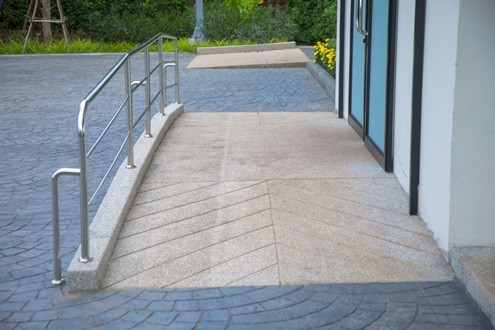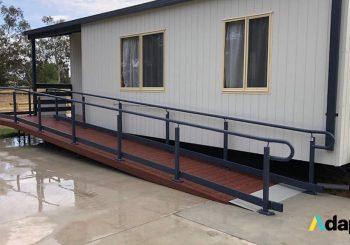There are quite a few things to take into consideration before getting a disability ramp installed.
Here is a list of tips that will help choose the perfect one for your specific needs.
#1 How Long Does The Ramp Need To Be?
The length of the ramp is directly dependent on the rise measurement, which is the height from the top step to the ground. It is crucial to follow all DDA guidelines while building your ramp. These guidelines are to ensure that the slope is entirely safe to use, and has the required width measurement.
The next step is selecting the material that you want your ramp made of wood and aluminium are two of the most common materials used. Wood is hardy and strong, but is high maintenance too. Aluminium, on the other hand, is tough and hardy, and doesn’t become impacted by climatic conditions. Aside from this, it’s easier to maintain as well.
#3 Pricing
The length of the ramp will be one of the deciding factors when it comes to pricing which will vary from city to city. Let us look at the prices of ramps that are over 30 feet long. A wooden one built by a professional carpenter can cost you anywhere from $3,500 – $8000 excluding all the additional costs of maintaining and getting it re-stained.
On the other hand, gettting an aluminium ramp assembled and installed will cost you between $3000 and $5,500. As mentioned earlier, it is an extremely durable material and requires minimal maintenance. Aluminium ramps are significantly less expensive than ones made of wood.
#4 Installation Timeframe
The time it takes to complete ramp construction depends entirely on its length and the type of material used. Wooden ramps take anywhere between two to seven days to build a wooden ramp that’s 30 feet in length. In comparison, aluminium ramp installation will take the contractor less than a day to complete.
#5 Maintenance
Remember that most ramps are located in outdoor spaces and are exposed to the elements like heat and rain. If you go with a wooden ramp, cleaning the wood and reapplying the sealing product is crucial. This protects it from moisture. The base of the slope is susceptible to some damage as it is in contact with the ground. It is essential to remove and replace any broken pieces to maintain its integrity. You will need the services of a carpenter from time to time.
In contrast, aluminium is known for its durability. You will find that there is no need for it to be repaired or replaced and will last you for several years. Both wood and aluminium require a certain amount of maintenance in the long term. However, you will find that the cost of ownership of aluminium ramps is lower than wooden ones.
Having proper traction is also crucial in a ramp. The wheels of a wheelchair need to brake when required. The right amount of traction also ensures that the person assisting can maintain safe footing. Wood can get slippery, whereas aluminium ramps come with ridges or non-slip surfaces which stay that way even in wet weather. The wooden planks used to build ramps are very smooth; they usually require additional materials to match the level of friction that comes with aluminium ramps.
Our team will provide you all the information you need about the different types of ramps and their specifications. We offer a wide variety of ramp layouts and options. You can call 1800 232 782 or contact Adapta through this form, and one of our representatives will contact you shortly.





